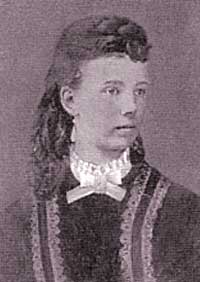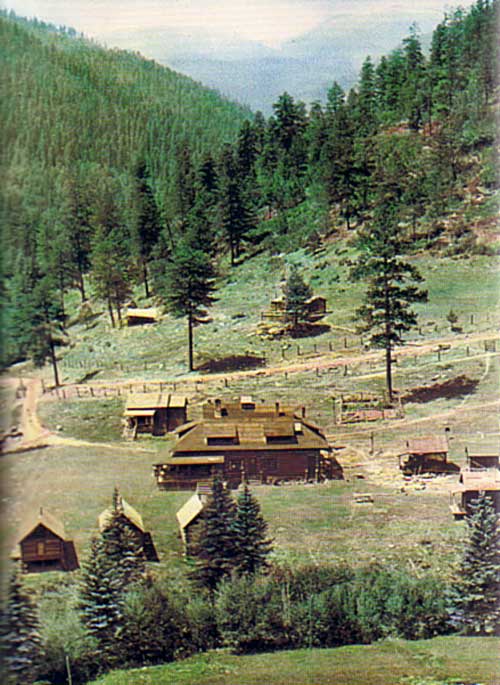
We’ve long known that Joe’s only marriage to widow Carrie (Winsor) Viles didn’t last long. A new article from the Albuquerque Daily Citizen, by way of the Las Vegas Optic, colorfully describes just how short it was.
UNLUCKY NUMBER
Couple Were Married in Room Thirteen of a Hotel.
The Pecos Valley Correspondent of the Las Vegas Optic says:
Thirteen is a sure unlucky number. Some time about the middle of April Joseph Blonger, an old miner and a Grand Army man of Santa Fe, led to the hymeneal altar in the Plaza hotel at Santa Fe, Mrs. C. A. Viles. The solemn obligation that bound them together as man and wife was performed in room 13.
Hardly two moons had passed over the fair contracting parties till Blonger concluded it was a good deal more economical and not near so hard work to hold down a miner’s cabin, so he gathered up his bed, bid the fair bride of less than sixty days good by and again picked up the pick and shovel, departed for Cerrillos and gave all his right, title, and “herediments” back to the fair one, shook the dust of the Pecos from his feet anl [sic] left.
Albuquerque Daily Citizen
July 16, 1902
This is of particular interest in that we have recently been corresponding with Carrie’s grand niece, Sara Winsor Johnson (no relation to us).
Sara informs us that Carrie is remembered in the Winsor family as something of a dingbat. Sara’s grandfather recalled having to bail her out after her first husband died, and then when she and Joe split up. When her third husband, Ben Hume, died, she was on her own. For what it’s worth, Joe is recalled as the best of her three husbands. Not sayin’ much, I guess.
According to Sara, the Winsor family — Windsor in some branches — can trace its roots back to William the Conqueror, and first came to these shores in 1638. Carrie, if I recall, was born in Vermont, just like all the Blongers.
As for those “herediments,” the story is a confusing one.
In March of 1892, Joe traveled far up the Pecos valley, north of Cowles, NM, to a place still barely accessible today. There he claimed 160 acres straddling the Pecos River as a homestead. (Just days later Sam and Lou would strike it big on the Forest Queen claim on Ironclad Hill, outside of Cripple Creek.)
Joe then went on to prospect in Colorado, Nevada, and Cochiti, north of Albuquerque. This is curious considering that a homestead claim must be occupied and developed to be retained. So how could Joe claim a homestead, and yet continue his itinerant ways?
In June of 1895, Carrie’s first husband, Charles Viles, passed away, and three months later she purchased Joe’s 160 acres. In 1896 she had a small cabin built.
In 1897 Joe was in Bonanza, and he bought property in Santa Fe. Carrie bought an additional piece of land in the Pecos valley. Then, in January of 1898, Joe finally recorded his 160 acre homestead.
In August Joe shot and killed Alexander Allan, operator of the Bottom Dollar Mine in the Cerrillos Hills, after Allan brandished a gun and threatened to kill Joe’s fellow miner Silas Smith with a rock. His trial was December 22, 1898, and he was acquitted. About that time Carrie sold 140 acres of the land.
Joe continued mining around Cerrillos and Santa Fe. Then, in 1902, he finally married Carrie.
Less than three months later, they divorced, and Joe went back to the desert mountains of Cerrillos. The question then becomes, did they marry to somehow settle the rights to the land? Was Joe just doing Carrie a favor? Or was it truly love gone bad?
As for the land itself, it was eventually developed it into a dude ranch known as Mountain View. In the late Seventies it was bought by the government, and is now just a meadow.
